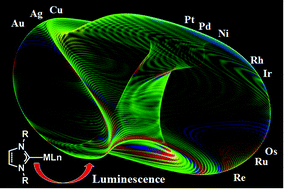N-heterocyclic carbene metal complexes: photoluminescence and applications†
Abstract
This review covers the advances made in the synthesis of luminescent transition metal complexes containing N-heterocyclic carbene (NHC) ligands. The presence of a high field strength ligand such as an NHC in the complexes gives rise to high energy emissions, and consequently, to the desired blue colour needed for OLED applications. Furthermore, the great versatility of NHC ligands for structural modifications, together with the use of other ancillary ligands in the complex, provides numerous possibilities for the synthesis of phosphorescent materials, with emission colours over the entire visible spectra and potential future applications in fields such as photochemical water-splitting, chemosensors, dye-sensitised solar cells, oxygen sensors, and medicine.


 Please wait while we load your content...
Please wait while we load your content...